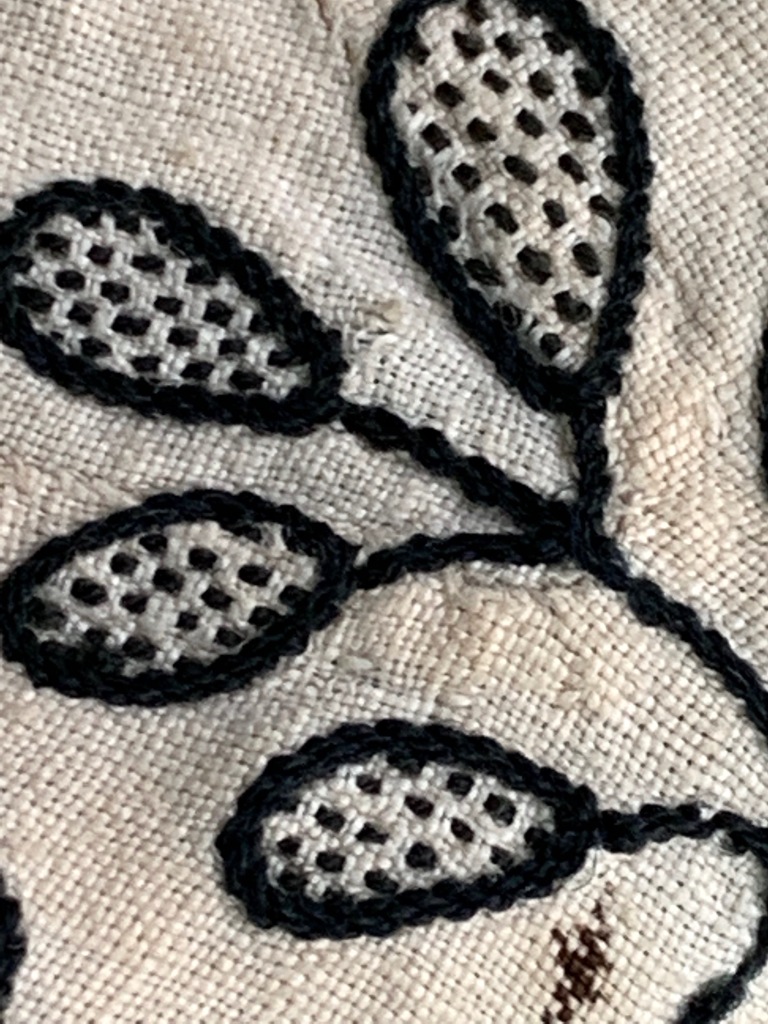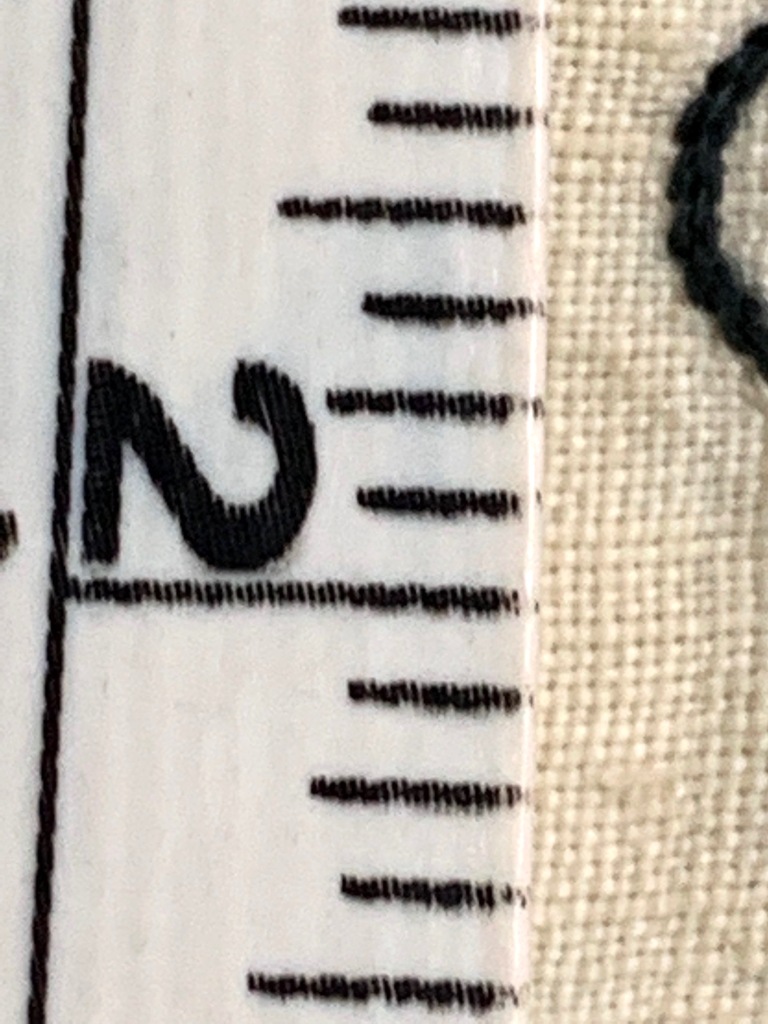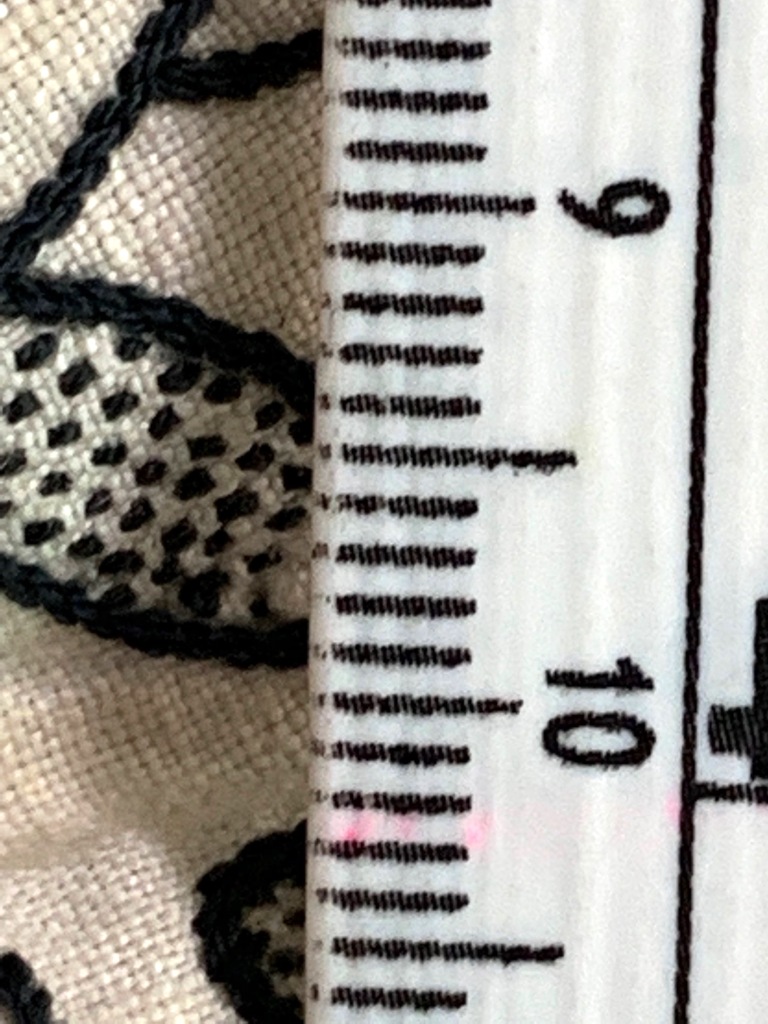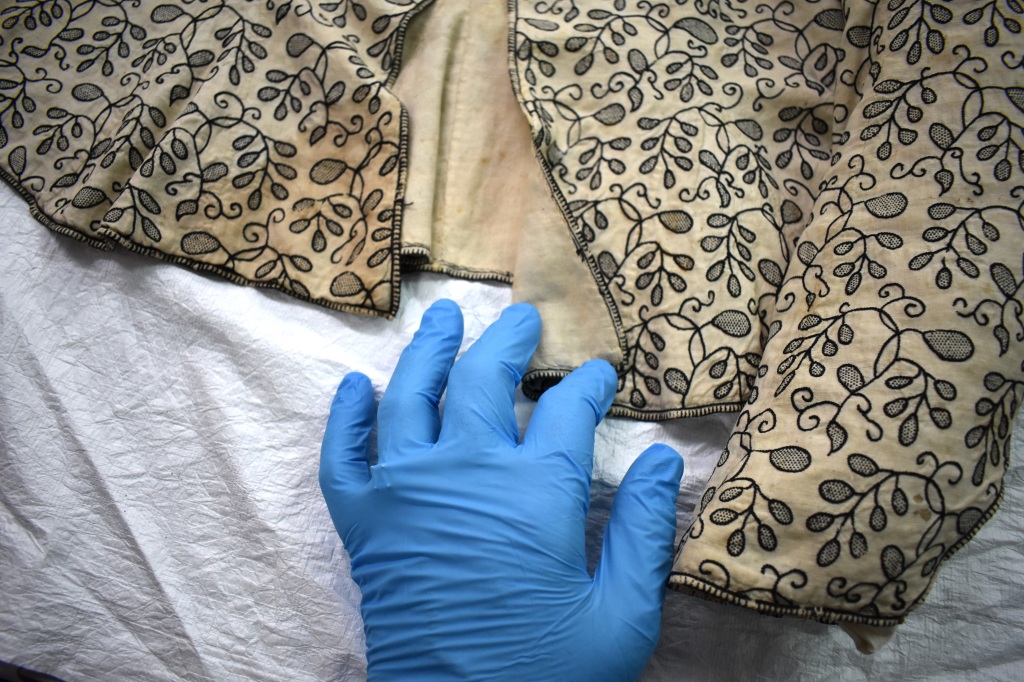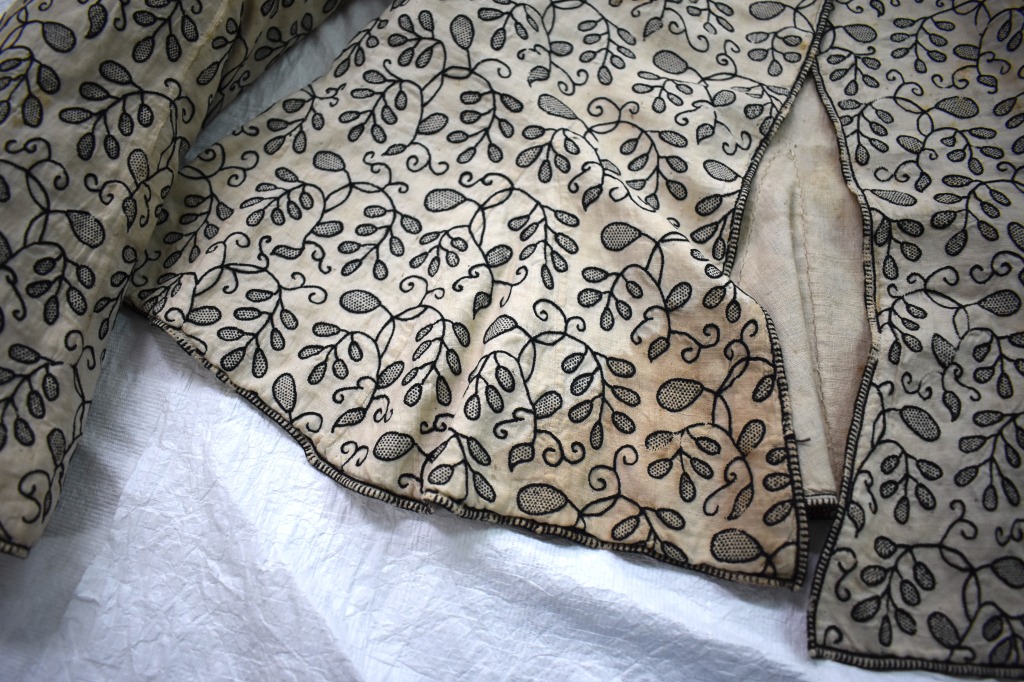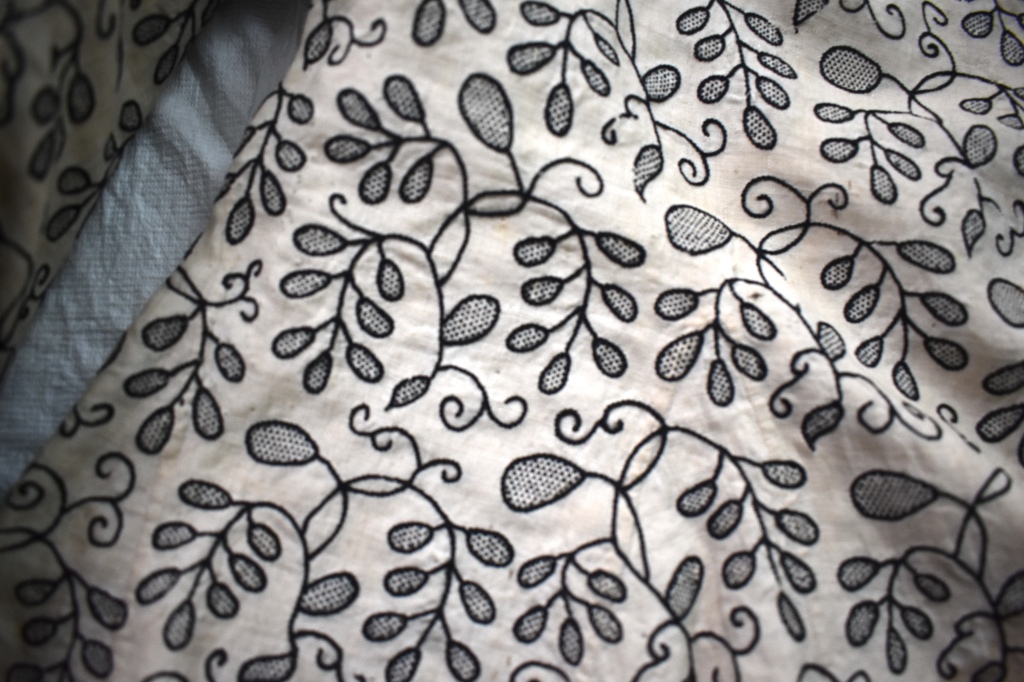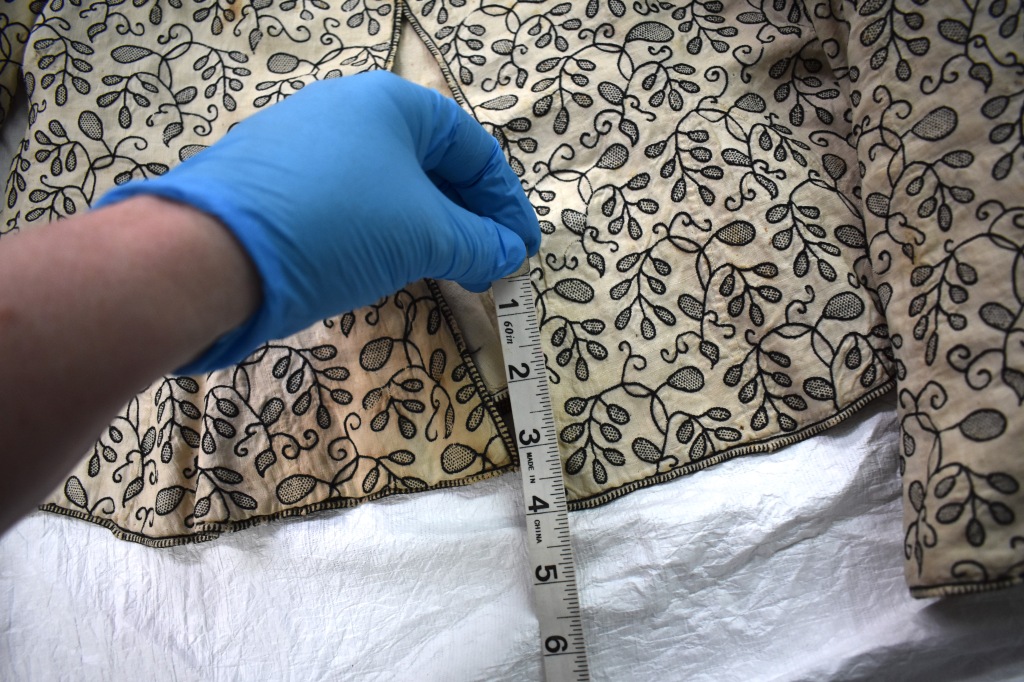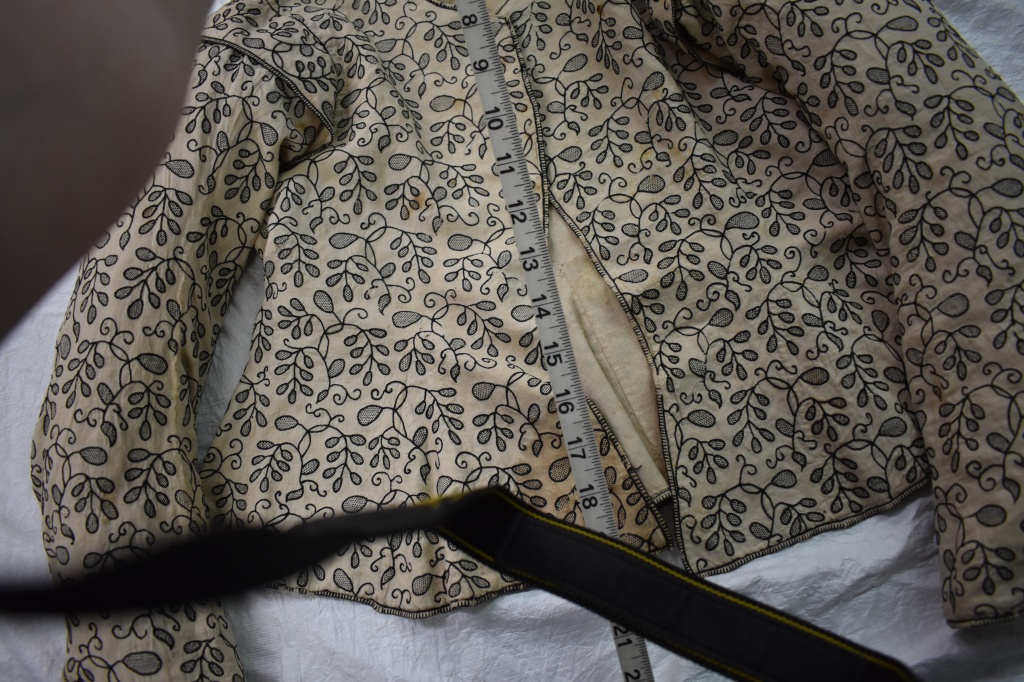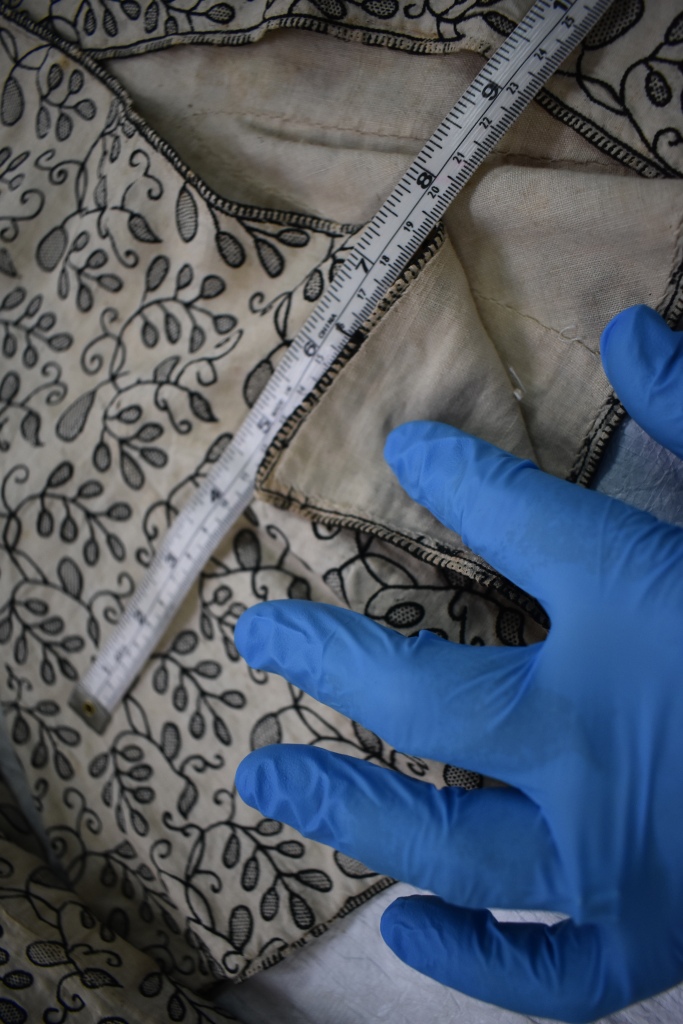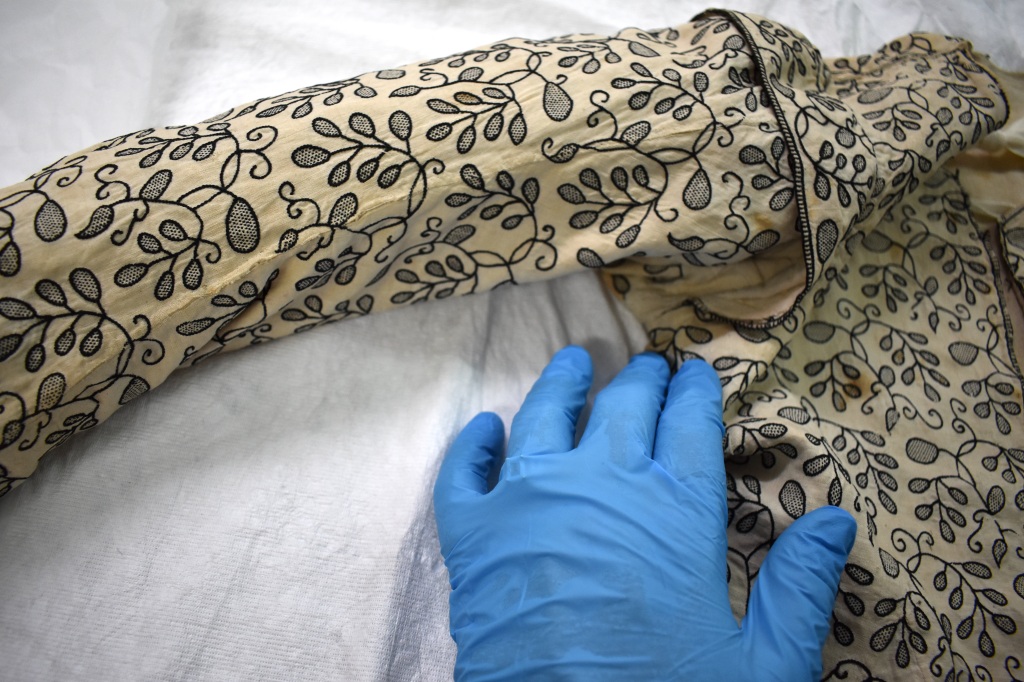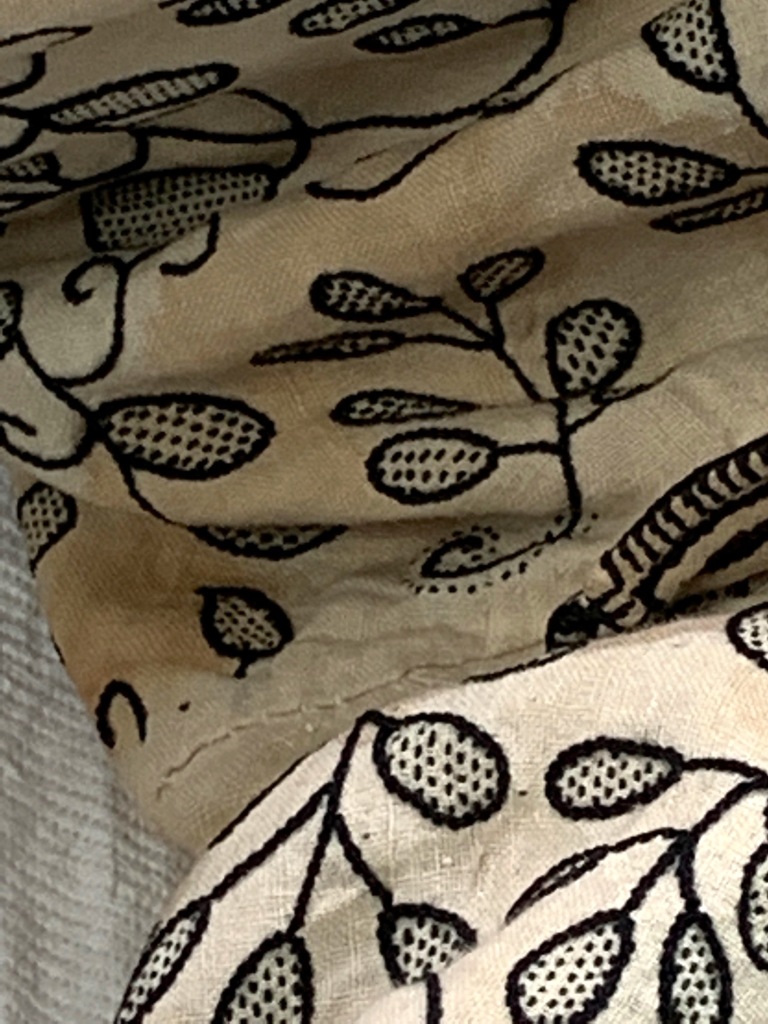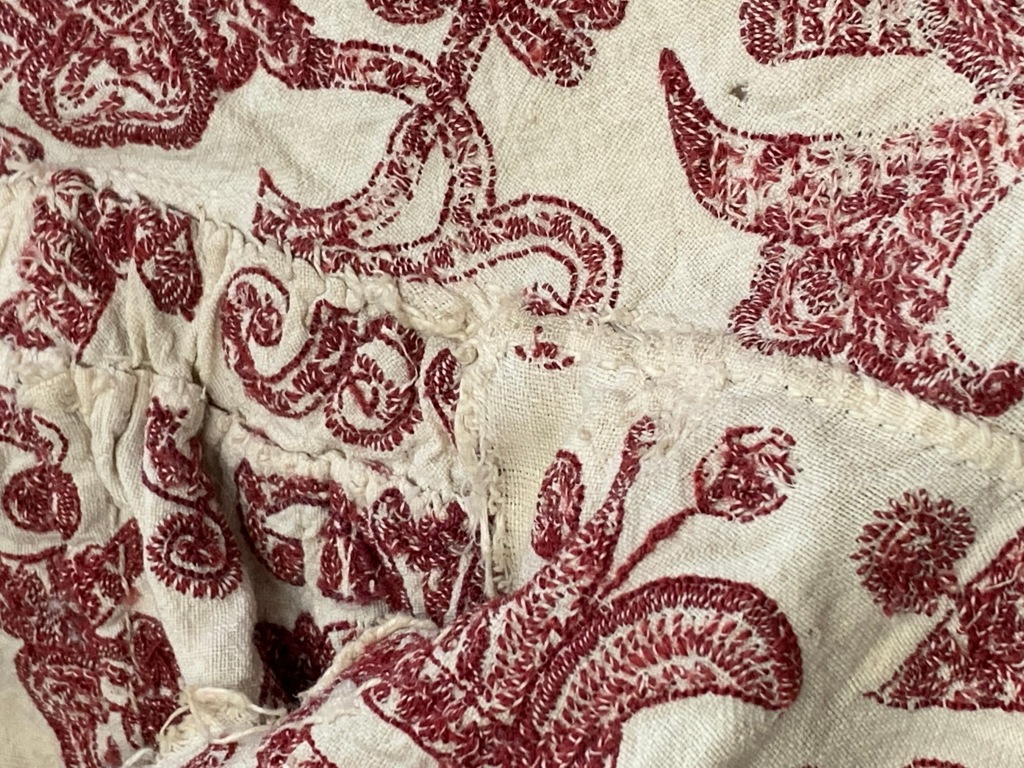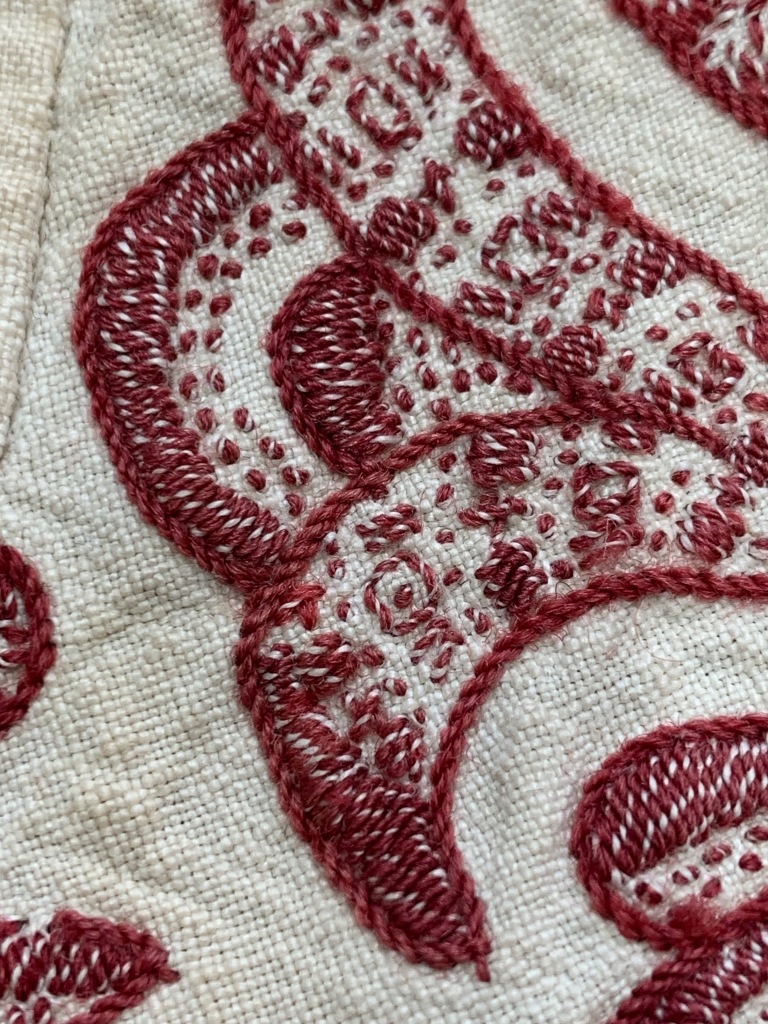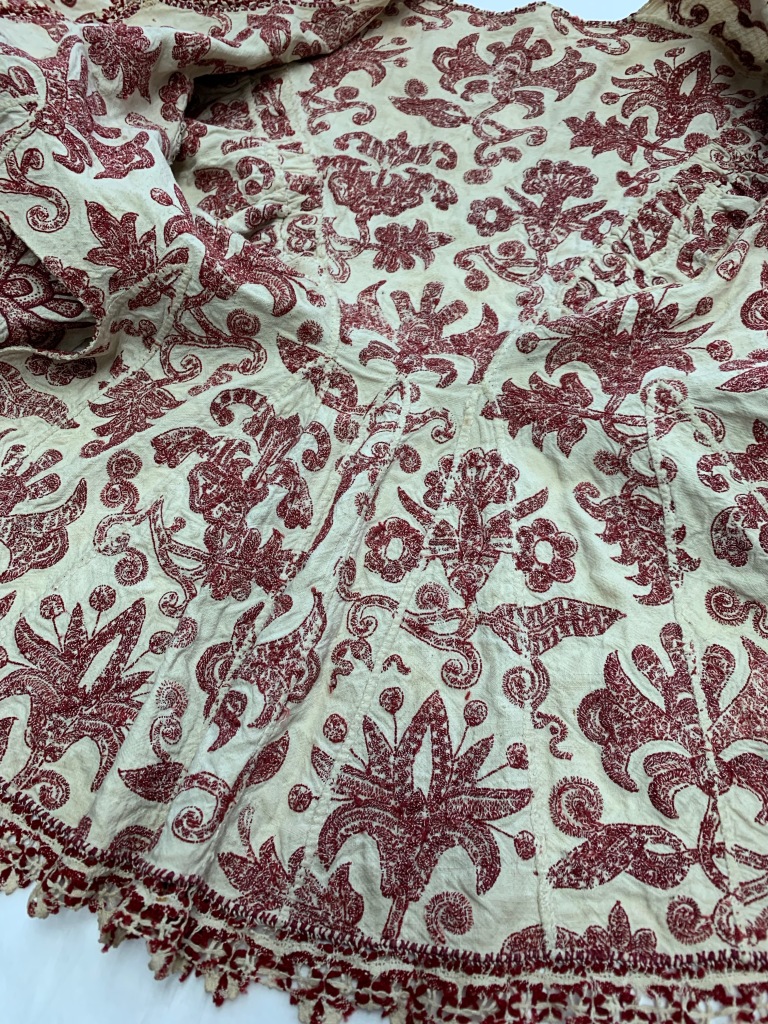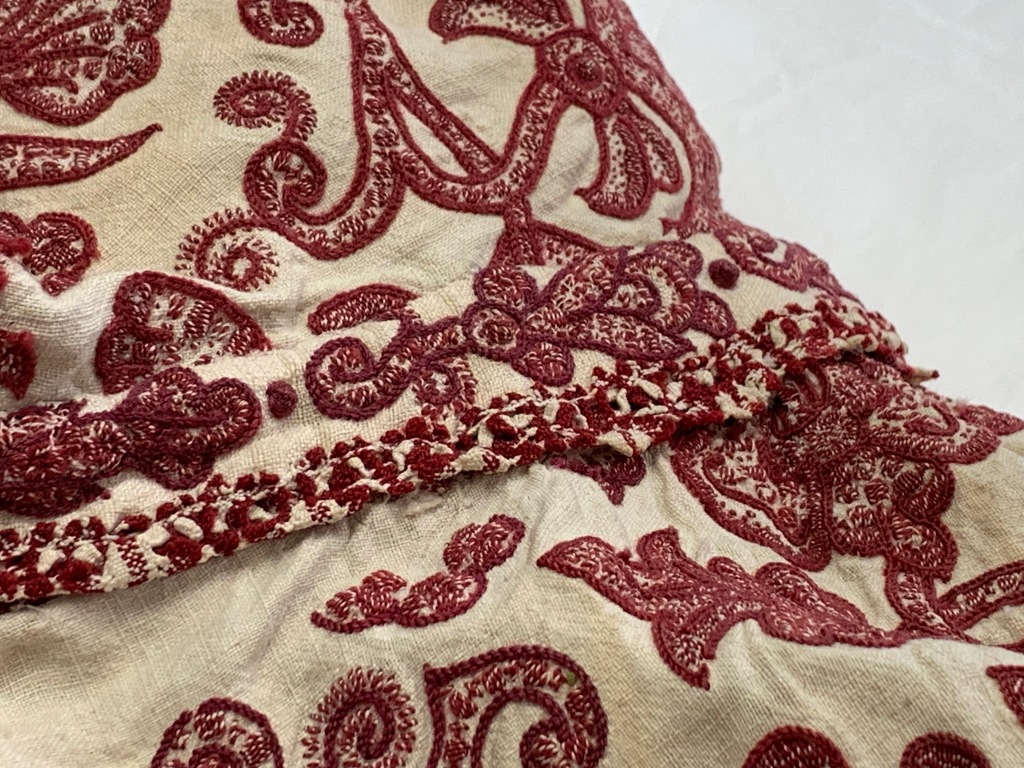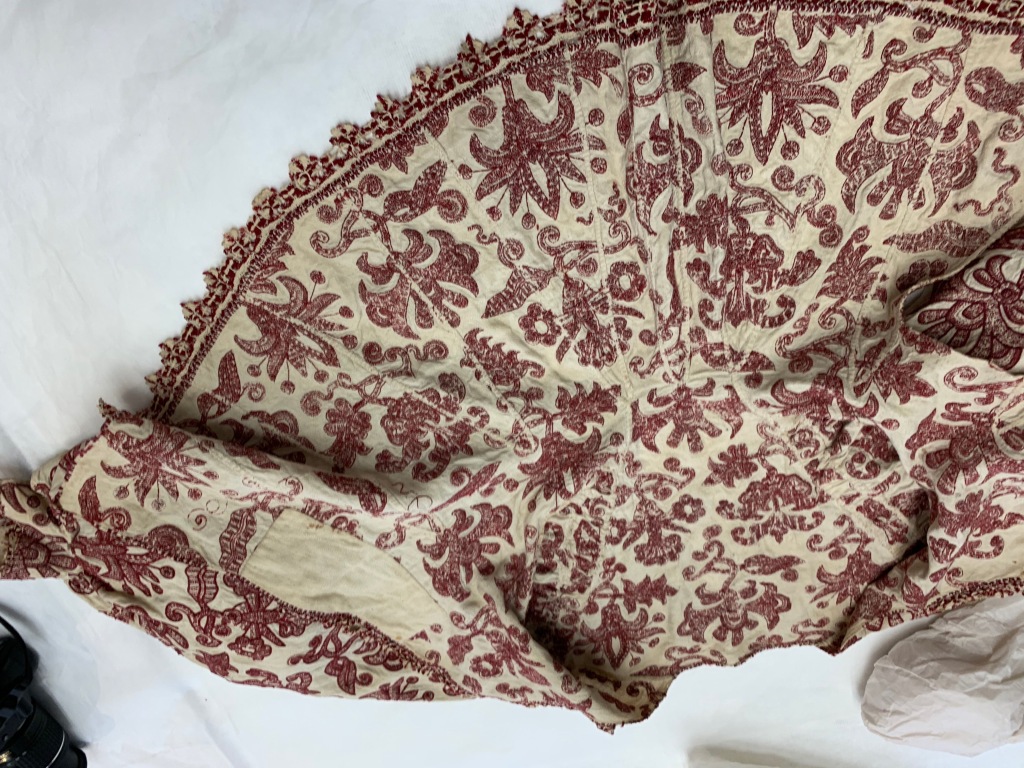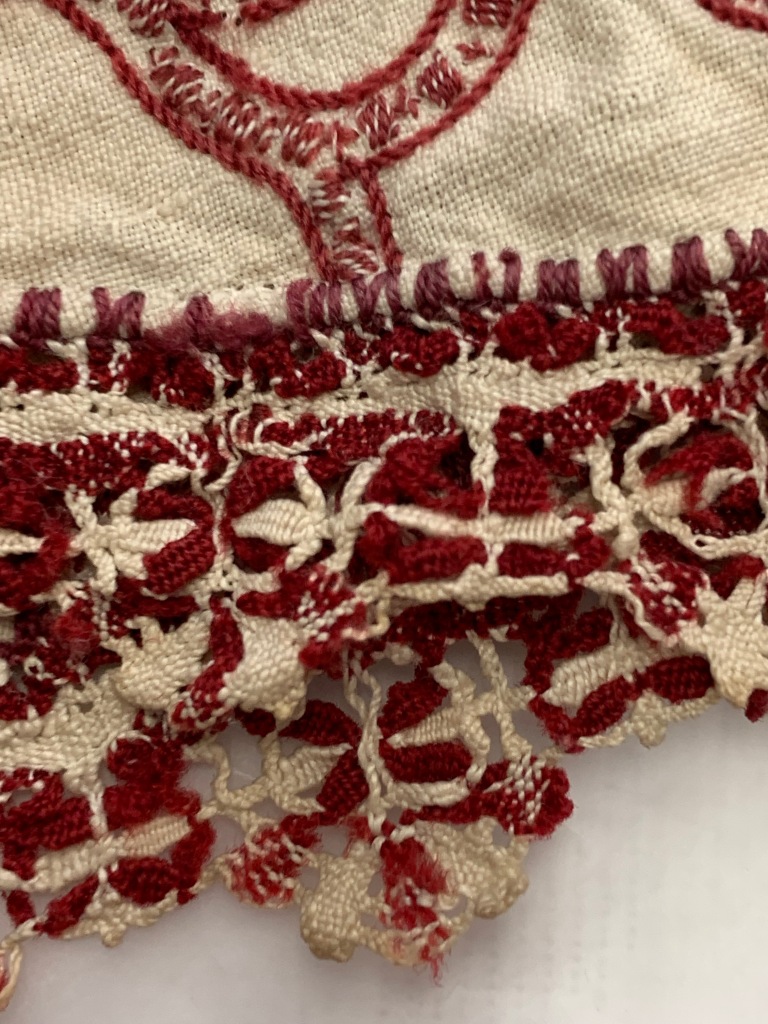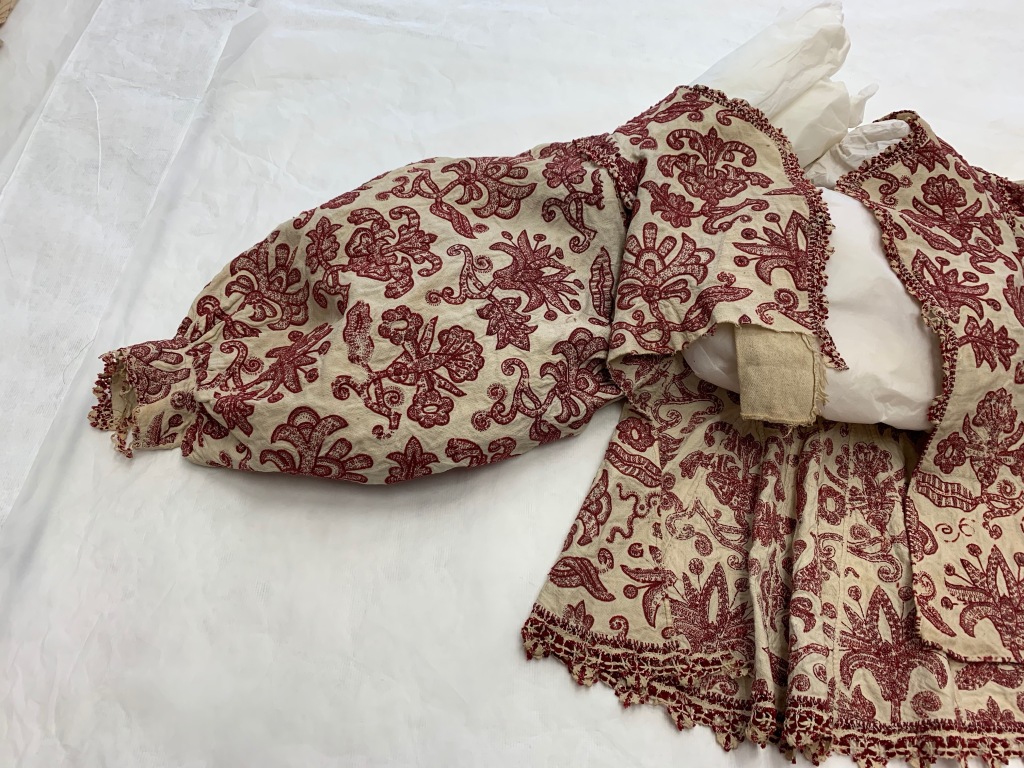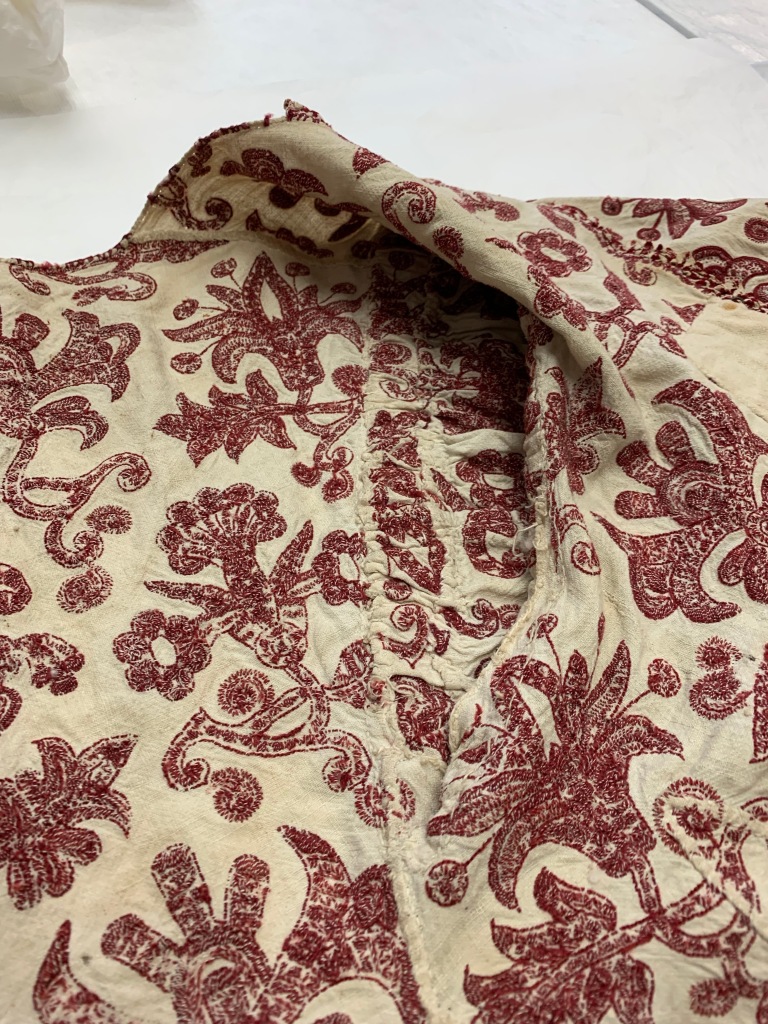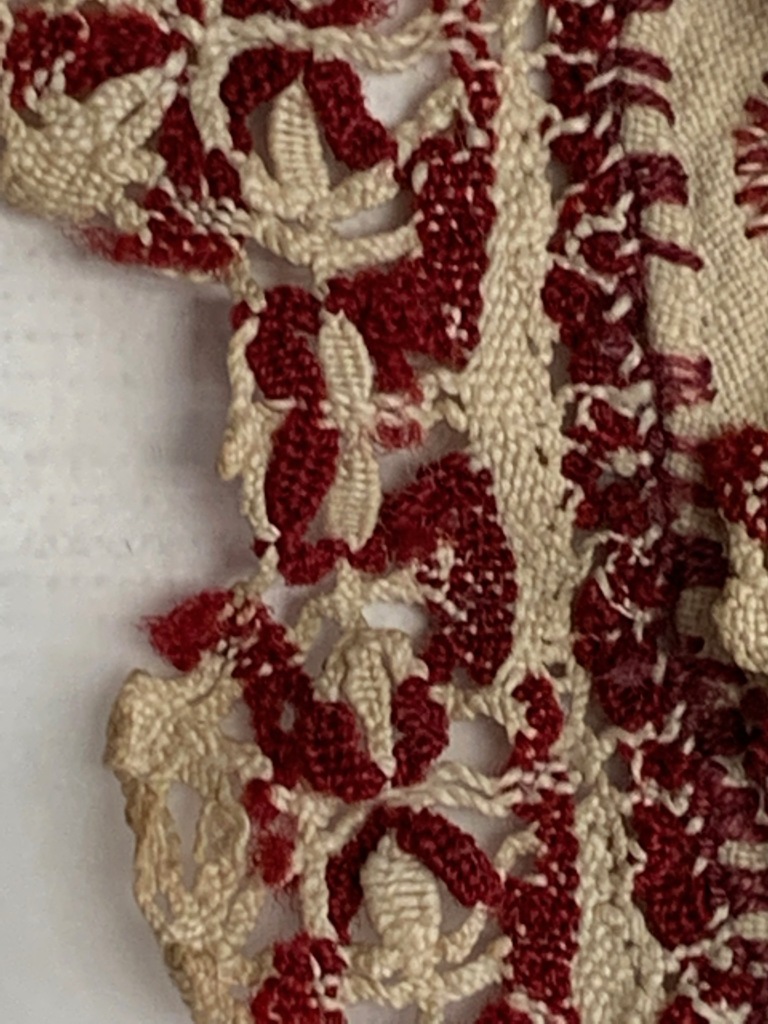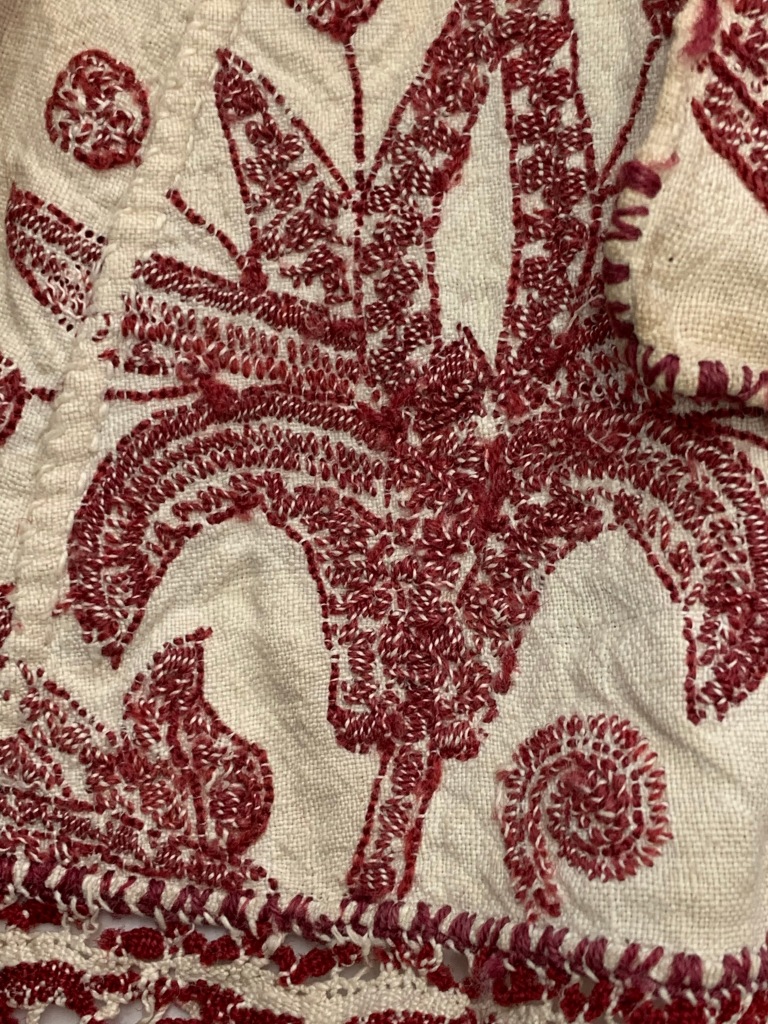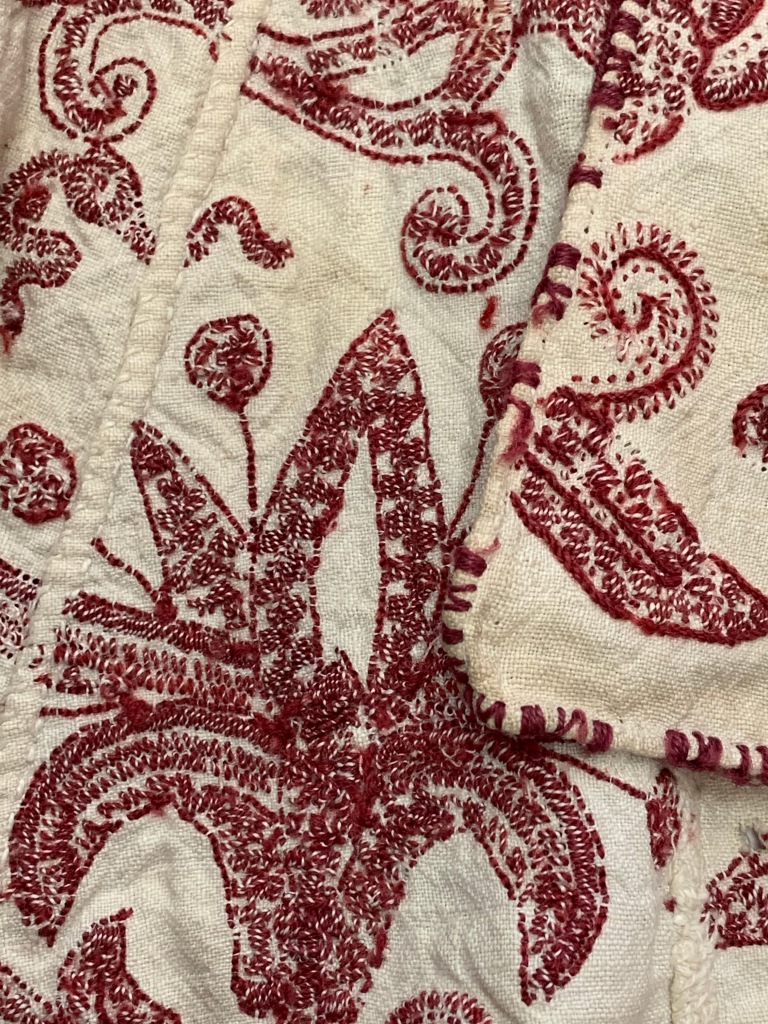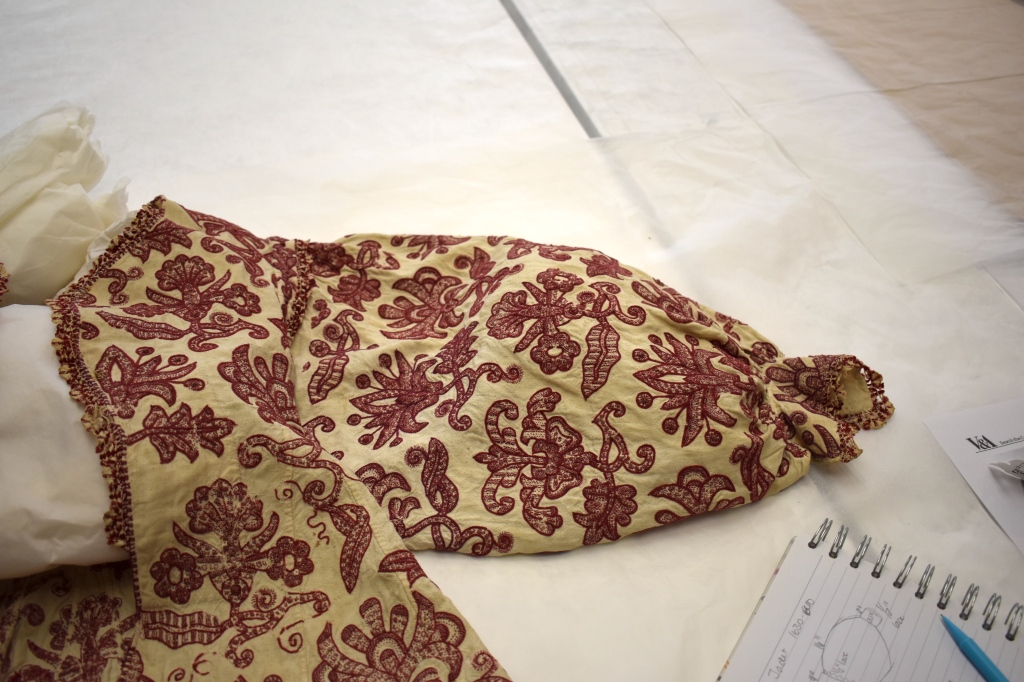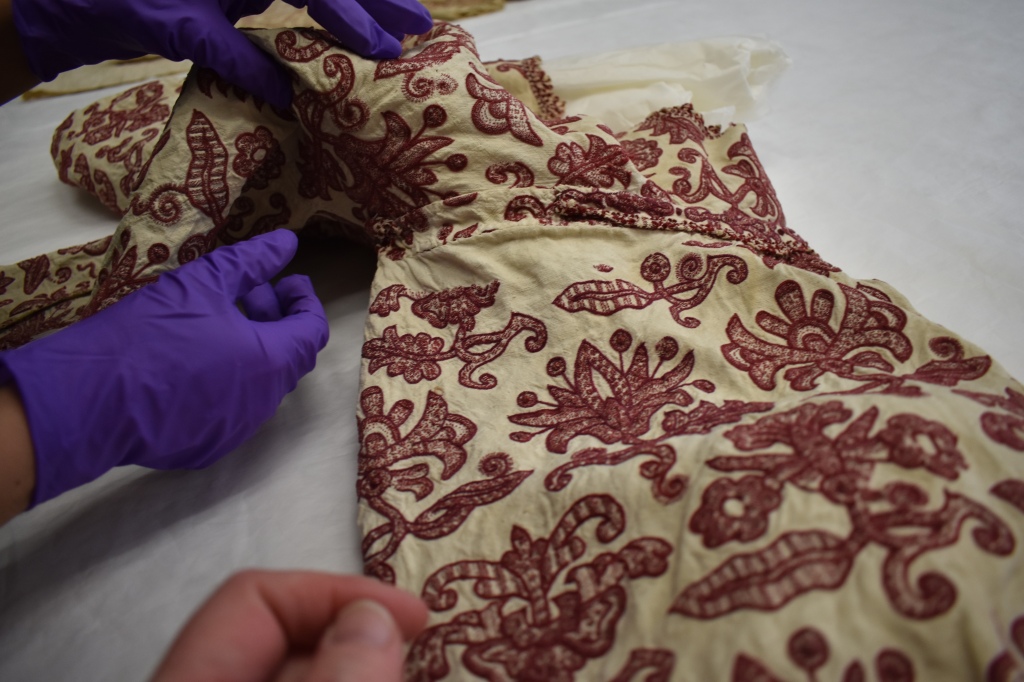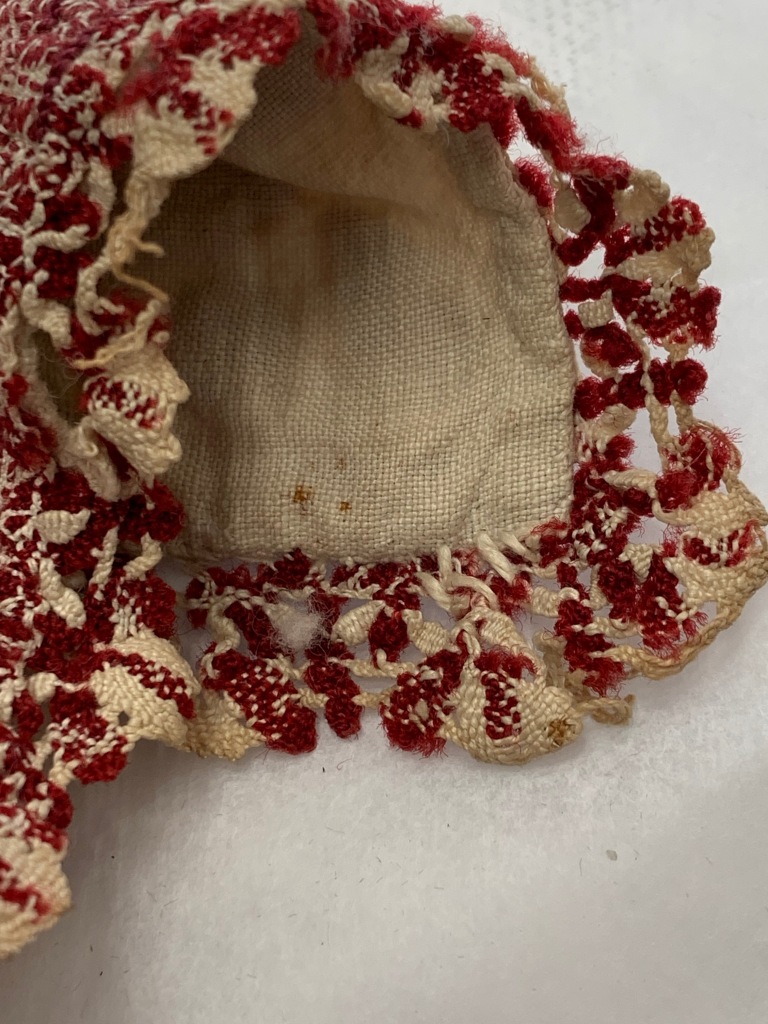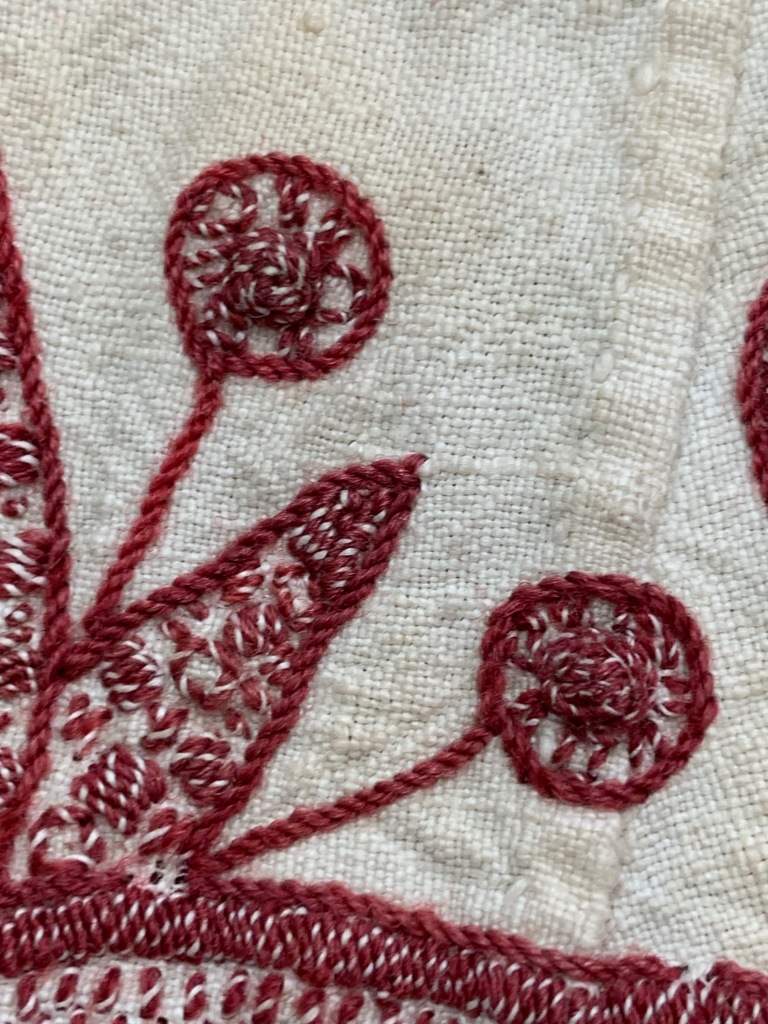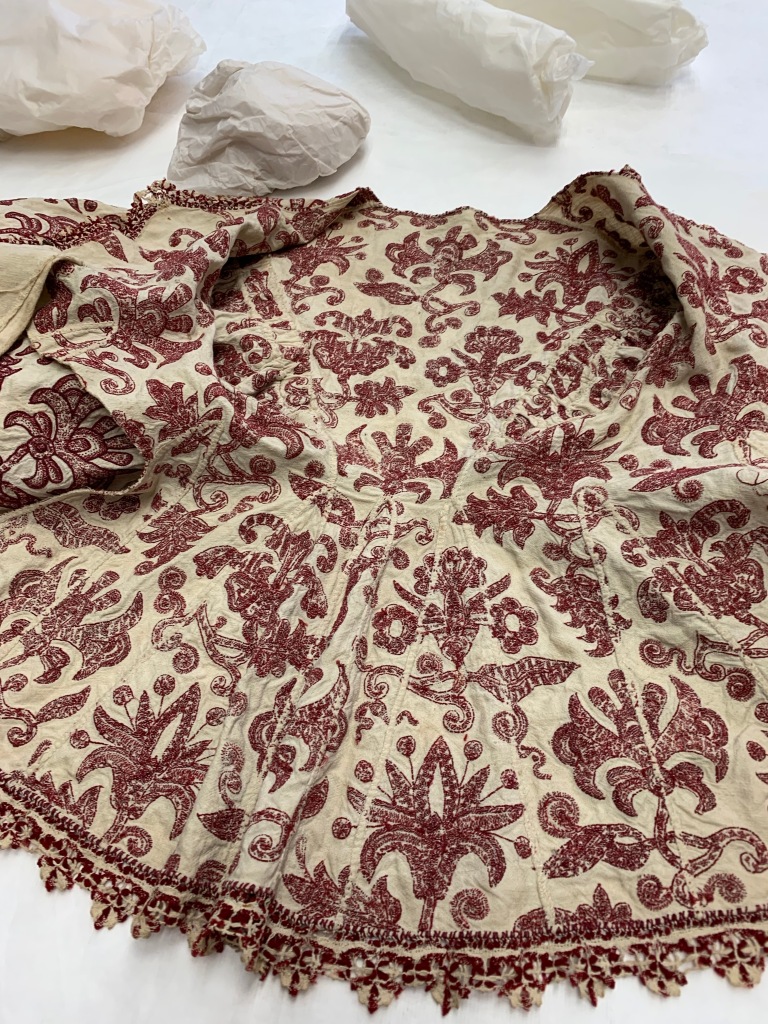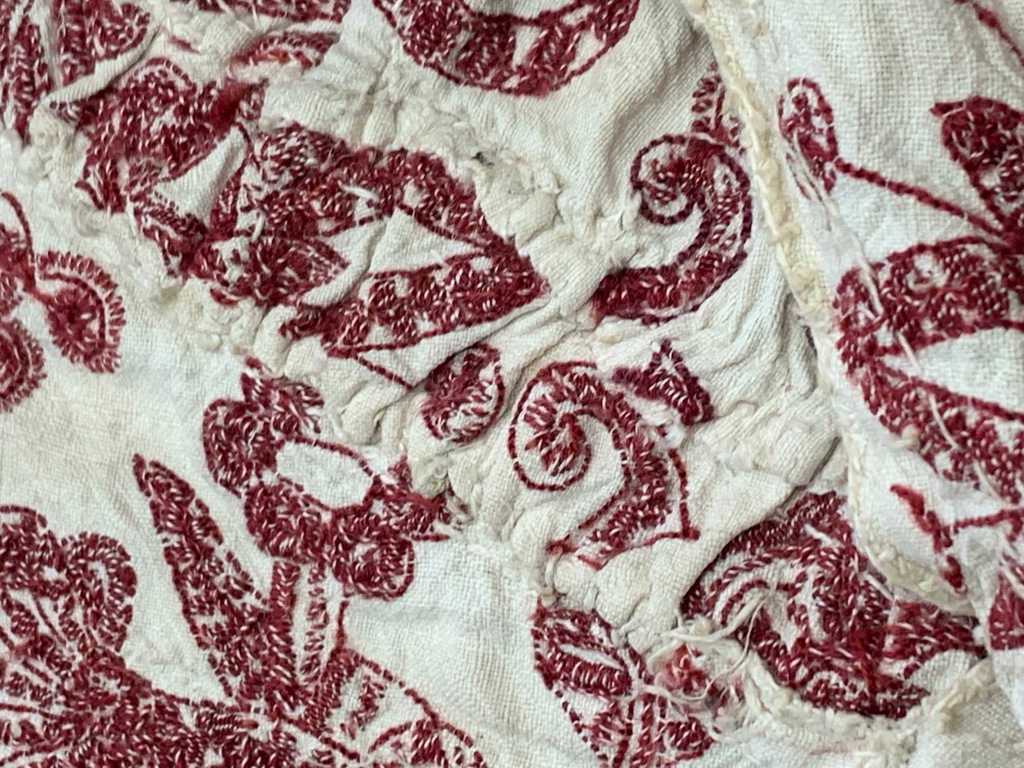
This jacket, which is housed in the Museum of London, is dated to about 1610-1620. The jacket, tabby woven linen, is covered over with fine wool embroidery in a barberry pattern.
https://collections.museumoflondon.org.uk/online/object/84662.html

Above: the European barberry.
The jacket is a fine tabby linen. This jacket is lined!
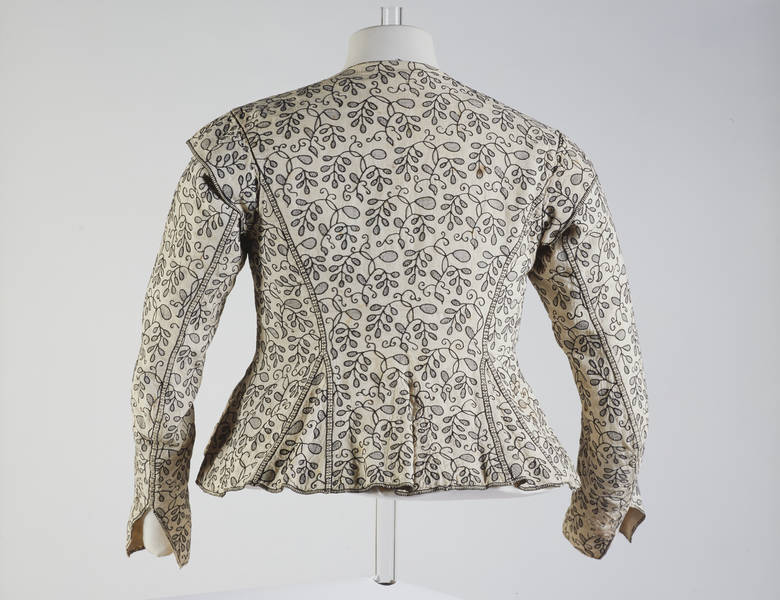
It appears that the jacket outer fabric was constructed, and then the embroidery was completed. You can see this as it is embroidered over the seams of the inset gores. The jacket measures about 18″ from top to bottom and the center back. Other measurements, as provided by the Museum, are: W 441 mm (shoulders); W 745 mm (widest elbow to elbow); H 465 mm (back); H 385 mm (front); L 540 mm (sleeve); C 820 mm (bust).
Then, the outer edges were slightly folded in and a coarser linen lining was inserted using a slip stitch, much in the way that linings were inserted into doublets in the 16th century. It is important to note that the edges were then finished with fine, diamond shaped embroidery. In the picture below, you can see the interior of the front edge, showing the bottom corner folded up to review the slip-stitched lining; the fine edge work is completed on the top fabric only.



The embroidery is notable in contrast to the jacket of two weeks ago. It’s nearly all complete, suggesting that the mordant used in the wool was not iron. This suggests that this was imported from Spain, since English black tended to use iron in the mordant. This is suggestive of professional work or at least that the work was completed for someone of a higher station. The embroidery is very fine.
Enjoy these further photos of the jacket.

